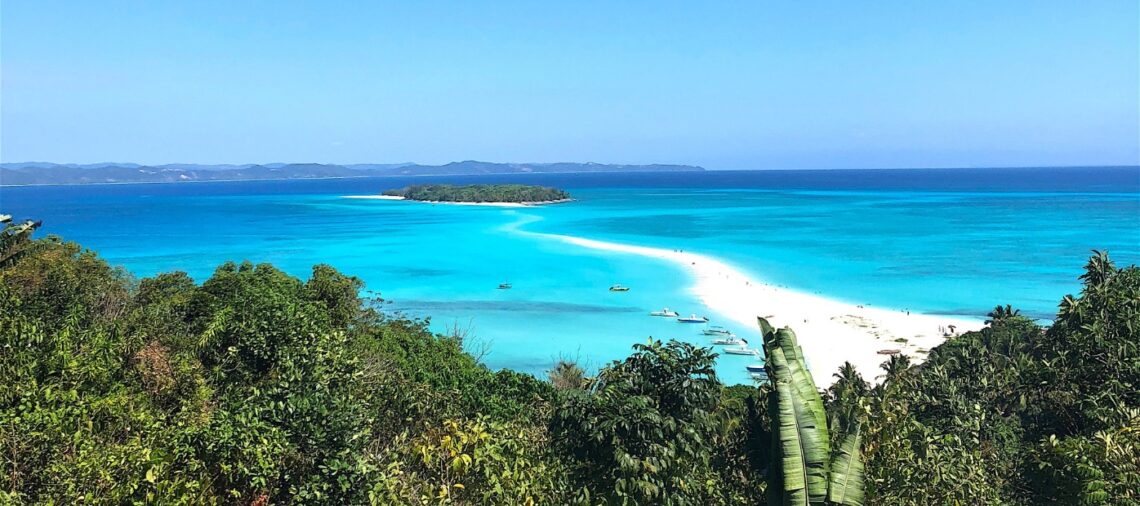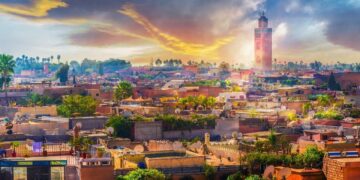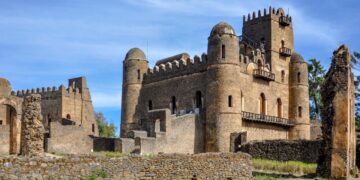Madagascar, the fourth largest island in the world, is a treasure trove of natural wonders and unique wildlife. With its stunning landscapes, diverse ecosystems, and rich cultural heritage, it offers many tourist attractions. In this article, we will explore the top 10 tourist attractions in Madagascar, showcasing the country’s remarkable beauty and captivating experiences.
Five interesting and intriguing facts about Madagascar
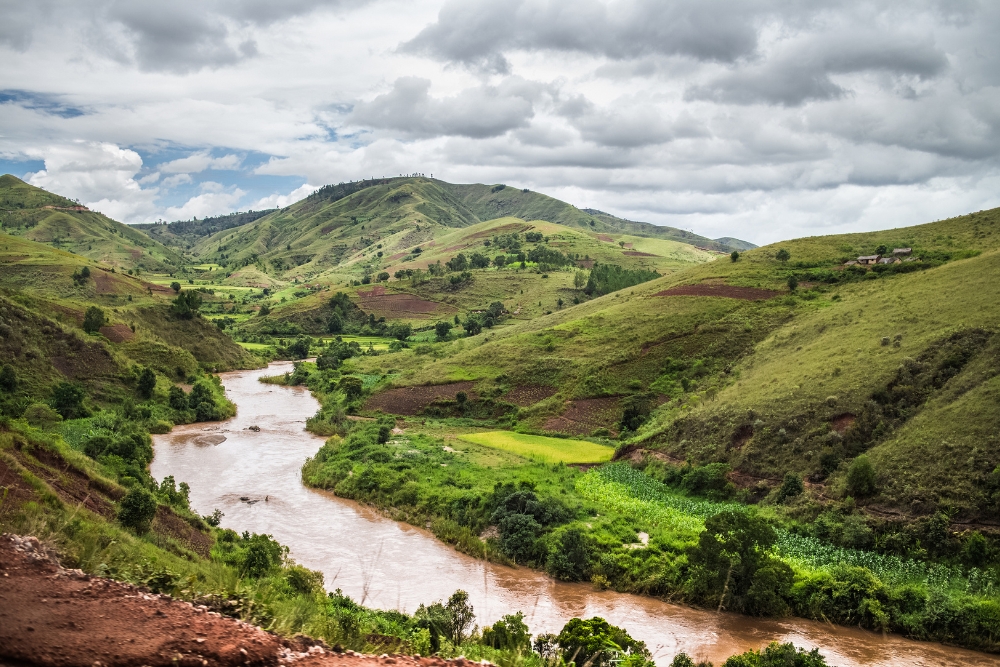
1. Madagascar is the fourth largest island in the world, located off the southeastern coast of Africa in the Indian Ocean. It is known for its unique and diverse ecosystem, with most of its plant and animal species found nowhere else on Earth.
2. The island is home to the famous lemurs, primates found only in Madagascar. There are over 100 different species of lemurs, ranging from the tiny mouse lemurs to the larger indri lemurs known for their haunting calls.
3. Madagascar is also known for its baobab trees, which are iconic symbols of the island. These ancient and distinctive trees can live for thousands of years and have unique adaptations to survive the arid conditions in certain parts of Madagascar.
4. The country has a rich cultural heritage. The Malagasy people, who comprise most of the population, have a unique blend of African, Arab, and Southeast Asian influences in their traditions, language, and cuisine.
5. Madagascar is a biodiversity hotspot with a staggering flora and fauna. It is estimated that around 90% of the island’s wildlife is endemic, meaning it cannot be found anywhere else. This includes the famous chameleons, colorful frogs, and numerous species of reptiles and birds.
Best tourist attractions in Madagascar
10 Historical Wonders of Antananarivo, the Capital City of Madagascar
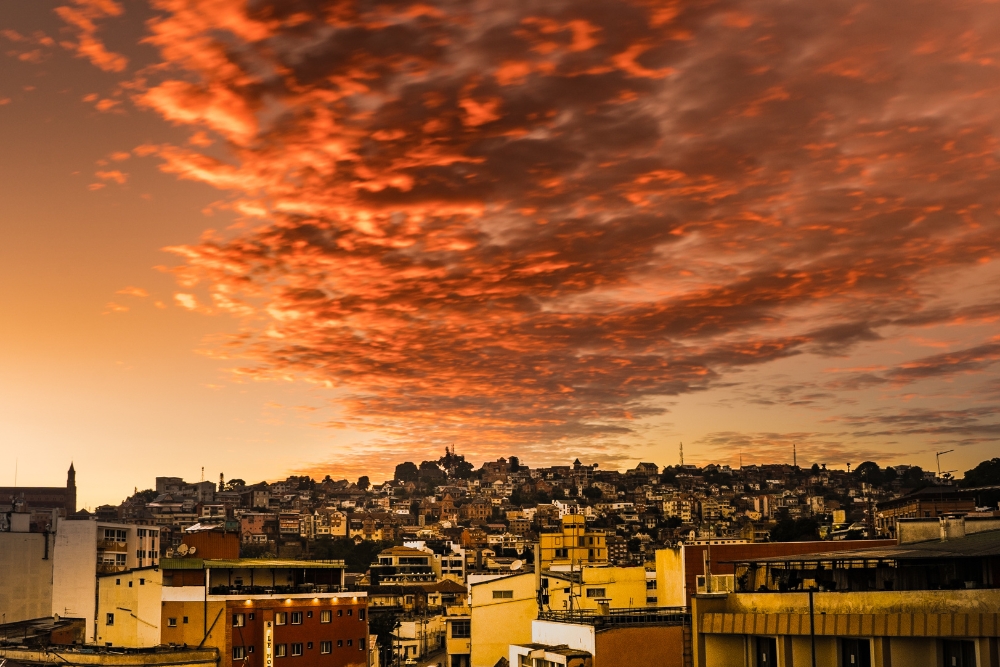
Antananarivo, the capital city of Madagascar, is a treasure trove of historical wonders that will transport you back in time. From ancient palaces to sacred sites, this vibrant city offers a glimpse into the rich cultural heritage of the island nation. Here are the top 10 tourist attractions in Antananarivo that you shouldn’t miss.
1. Rova of Antananarivo: Perched on a hilltop, the Rova is the city’s iconic symbol. This royal palace complex was once the residence of the Merina kings and queens. Although a fire partially destroyed it in 1995, ongoing restoration efforts have revived its former glory.
2. Andafiavaratra Palace: Located within the Rova complex, this palace was the Prime Minister’s official residence during the monarchy. Today, it houses a museum that showcases artifacts and exhibits related to Madagascar’s history and culture.
3. Ambohimanga: Just a short drive from the city, Ambohimanga is a UNESCO World Heritage site and a sacred hill that holds great significance for the Malagasy people. Explore the royal palace, ancient tombs, and the stunning panoramic views of the surrounding countryside.
4. Independence Avenue: This bustling street is the heart of Antananarivo, lined with shops, restaurants, and historical buildings. Take a stroll along the avenue, soak in the lively atmosphere, and admire the colonial architecture.
5. Analakely Market: Immerse yourself in the vibrant local culture at this bustling market. You’ll find many goods to browse and purchase from fresh produce to handicrafts. Don’t forget to haggle for the best prices!
6. Queen’s Palace Museum: Located in the heart of the city, this museum offers a fascinating insight into the lives of the Merina royalty. Admire the intricate woodwork, royal costumes, and historical artifacts on display.
7. Tsimbazaza Zoo: If you’re traveling with family, visiting Tsimbazaza Zoo is a must. This zoological and botanical park is home to a diverse range of Madagascar’s unique wildlife, including lemurs, chameleons, and various bird species.
8. Lake Anosy: Take a break from the city’s hustle and bustle at Lake Anosy. This picturesque lake is surrounded by lush greenery and offers a tranquil setting for a leisurely walk or a picnic. Don’t miss the iconic Monument of Independence, which stands proudly on an island in the lake.

9. Soarano Train Station: Step back in time at this charming train station, which dates back to the early 20th century. Marvel at the vintage locomotives and explore the small museum that showcases the history of Madagascar’s railway system.
10. Faravohitra Church: This beautiful Catholic church is perched on a hill and offers panoramic city views. Admire the stunning stained glass windows and the peaceful ambiance of this sacred place.
Antananarivo’s historical wonders are a testament to the island’s rich and diverse heritage. Whether you’re a history enthusiast or simply curious about the local culture, these top 10 tourist attractions will leave you with lasting memories of visiting Madagascar’s capital city. So, pack your bags and get ready to embark on a journey through time in Antananarivo!
9 Exploring the Rich Marine Life of Nosy Tanikely
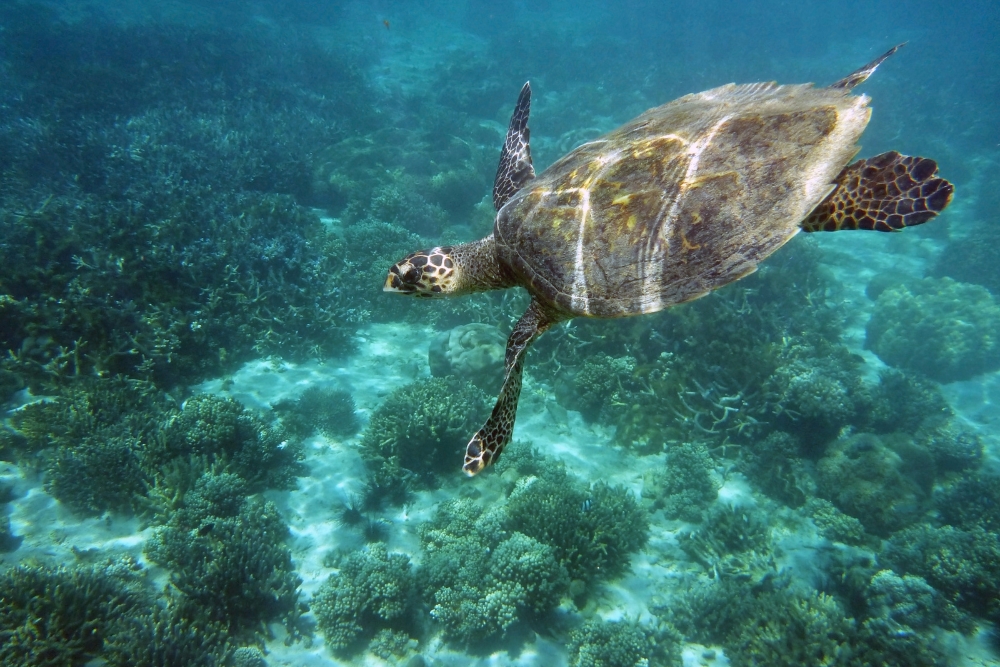
Located off the northwest coast of Madagascar, Nosy Tanikely is a small island boasting some of the region’s most diverse and vibrant marine ecosystems. The island is part of the Nosy Be archipelago and is a popular destination for snorkeling and diving enthusiasts.
As you approach Nosy Tanikely, you’ll be greeted by crystal-clear turquoise waters teeming with life. A coral reef, home to various marine species, surrounds the island. Snorkeling in these waters is like entering a new world, where you’ll encounter colorful coral formations, schools of tropical fish, and even the occasional sea turtle or dolphin.
One of the highlights of exploring the marine life of Nosy Tanikely is the opportunity to swim with whale sharks. These gentle giants, which can grow up to 40 feet in length, migrate to the waters around Nosy Tanikely between September and December. Swimming alongside these magnificent creatures is an experience that will stay with you for a lifetime.
For those who prefer to stay dry, glass-bottom boat tours are available, allowing you to observe the underwater world without getting wet. These tours provide a unique perspective on the marine life of Nosy Tanikely, as you’ll be able to see the coral reefs and fish from the comfort of a boat.
Aside from the marine life, Nosy Tanikely also offers stunning beaches and hiking trails. The island is covered in lush vegetation, providing a picturesque backdrop for a stroll or a picnic on the beach. You can also climb to the top of the island’s lighthouse, which offers panoramic views of the surrounding ocean and neighboring islands.
To make the most of your visit to Nosy Tanikely, it’s recommended to hire a local guide who can show you the best spots for snorkeling and diving. These guides are knowledgeable about the area and can help you navigate the underwater world safely.
Regarding accommodation, a few options are available on Nosy Tanikely itself, including a small eco-lodge. However, most visitors stay on the nearby island of Nosy Be, which offers a wider range of hotels and resorts.
8 Cultural Delights in the Royal Hill of Ambohimanga
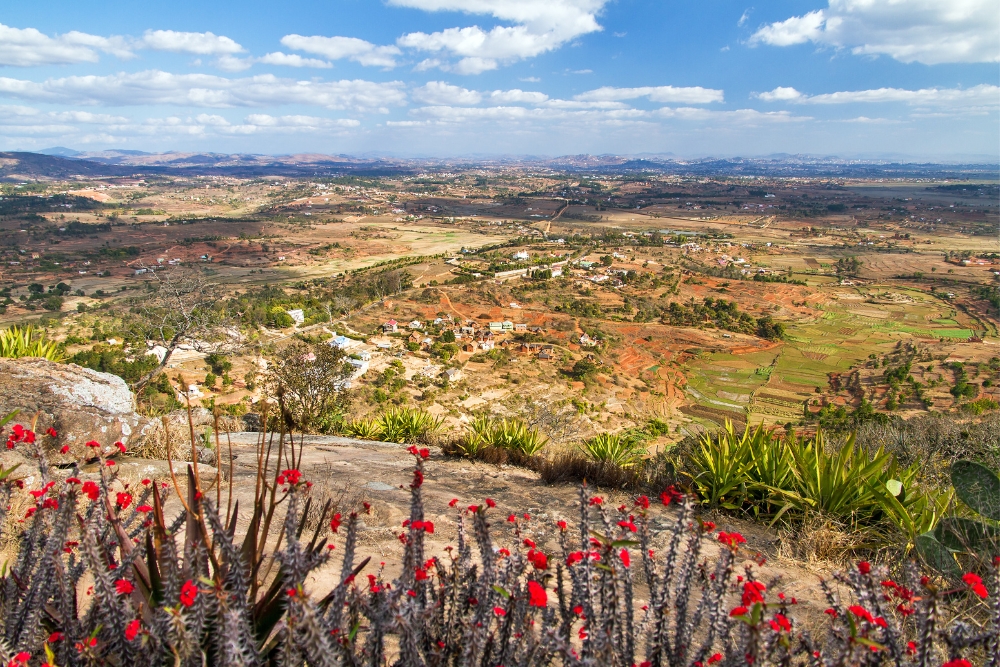
Madagascar, the fourth largest island in the world, is a treasure trove of natural wonders and cultural delights. While the country is famous for its unique wildlife and stunning landscapes, it also boasts a rich cultural heritage worth exploring. One of the must-visit destinations for cultural enthusiasts is the Royal Hill of Ambohimanga.
Perched on a hill just outside the capital city of Antananarivo, the Royal Hill of Ambohimanga is a UNESCO World Heritage site that offers a glimpse into Madagascar’s royal history. This ancient city was once the residence of the Merina kings, who ruled over the central highlands of Madagascar for centuries.
As you make your way up the hill, you’ll be greeted by a series of stone gates, each representing a different stage of the royal journey. These gates, known as “rova,” are adorned with intricate carvings and serve as a testament to the craftsmanship of the Merina people. Walking through these gates, you can’t help but feel a sense of awe and wonder at the grandeur of the place.
At the heart of the Royal Hill of Ambohimanga lies the Rova of Ambohimanga, the royal palace. This impressive structure, built entirely out of wood, is a masterpiece of Malagasy architecture. Inside, you’ll find a collection of artifacts and historical objects that offer a fascinating insight into the lives of the Merina kings.
One of the highlights of a visit to the Royal Hill of Ambohimanga is the chance to explore the sacred sites that dot the hill. These sites, known as “fady,” are of great spiritual significance to the Malagasy people. From the sacred spring to the tomb of the first Merina king, each site has its unique story.
As you wander through the hill, you’ll also come across several traditional houses preserved to showcase the daily life of the Merina people. These houses, made of local materials such as bamboo and thatch, provide a glimpse into the traditional architecture and way of life of the Malagasy people.
To truly immerse yourself in the cultural delights of the Royal Hill of Ambohimanga, be sure to visit during one of the many festivals that take place throughout the year. From the lively music and dance performances to the colorful processions, these festivals offer a unique opportunity to experience the vibrant culture of Madagascar.
As you explore the Royal Hill of Ambohimanga, take a moment to soak in the breathtaking views of the surrounding countryside. From the hilltop, you can see the sprawling city of Antananarivo, with its bustling markets and vibrant street life. It’s a reminder of the rich tapestry of cultures that make up Madagascar.
7 Unforgettable Experiences at Isalo National Park
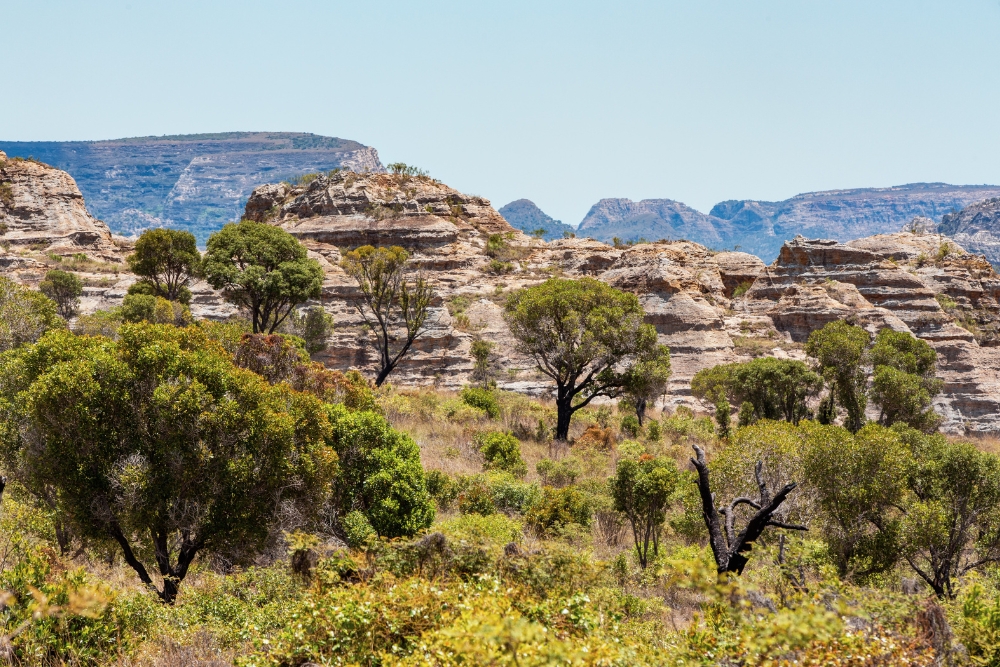
Another great experience when visiting Madagascar can be found at Isalo National Park. This place will leave you in awe of its beauty and diversity and one of the best tourist attractions in Madagascar.
Isalo National Park is located in the southern part of Madagascar and covers an area of over 800 square kilometers. It is known for its dramatic sandstone formations, deep canyons, and natural pools. The park is a haven for hikers and nature enthusiasts, offering a variety of trails that lead to breathtaking viewpoints and hidden waterfalls.
As you enter the park, you will be greeted by towering cliffs and rugged landscapes that seem straight out of a movie. The sandstone formations, shaped by wind and water over millions of years, create a surreal atmosphere unlike anything you have ever seen. It’s no wonder Isalo National Park has been dubbed the “Grand Canyon of Madagascar.”
One of the most popular trails in the park is the Canyon des Singes, or Monkey Canyon. As you hike through this narrow canyon, you will be surrounded by towering cliffs on both sides, creating a sense of adventure and excitement. Keep an eye out for the ring-tailed lemurs that call this place home – they are a common sight known for their playful antics.
Another must-visit spot in Isalo National Park is the Piscine Naturelle, a natural swimming pool in the park’s heart. After a long day of hiking, there’s nothing better than taking a refreshing dip in the crystal-clear waters of this pool. Surrounded by lush vegetation and towering cliffs, it’s a truly magical experience that will leave you feeling rejuvenated.
For those seeking a more challenging adventure, the trek to the Namaza viewpoint is a must. This trail takes you through dense forests and rocky terrain, rewarding you with panoramic views of the park and surrounding landscapes. It’s a strenuous hike, but the breathtaking vistas at the top make it all worthwhile.
If you’re lucky, you might even spot some of the park’s unique wildlife during your visit. Isalo National Park is home to various species, including the Verreaux’s sifaka, a type of lemur known for its acrobatic skills. Keep your eyes peeled and your camera ready – you never know what you might encounter on your journey through this natural wonderland.
As you explore Isalo National Park, you will be struck by its beauty and tranquility. The park offers a sense of serenity that is hard to find in today’s fast-paced world. Whether hiking through canyons, swimming in natural pools, or simply taking in the breathtaking views, you will immerse yourself in a world of natural wonders that will stay with you long after you leave.
6 Witnessing Unique Wildlife at Ranomafana National Park
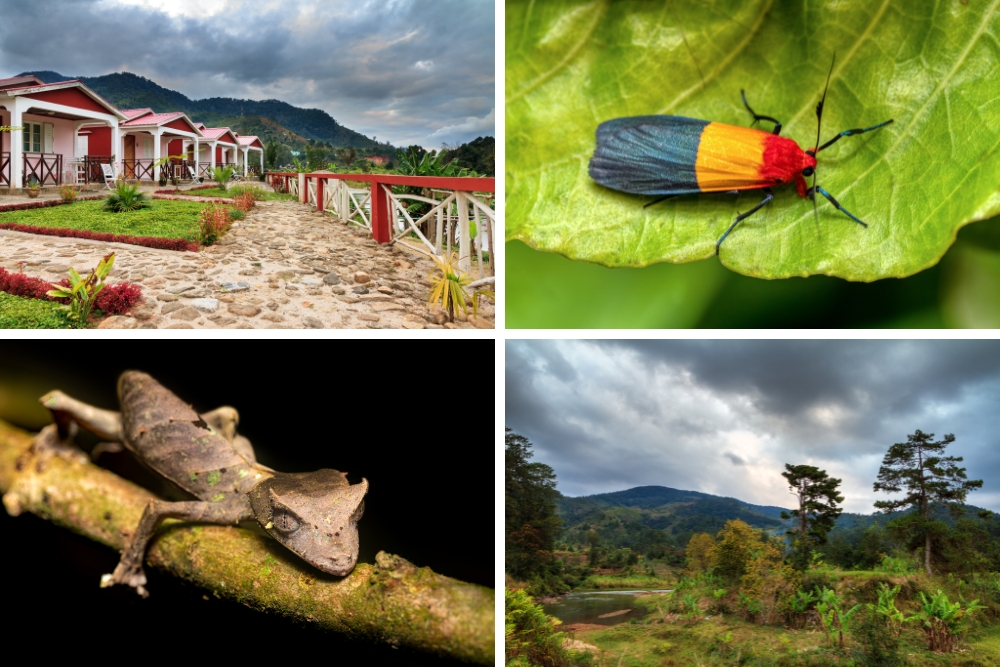
Another top tourist attraction in Madagascar is Ranomafana National Park, a haven for nature enthusiasts and wildlife lovers alike.
Located in the southeastern part of Madagascar, Ranomafana National Park is a lush rainforest covering over 160 square miles. It was established in 1991 to protect the critically endangered golden bamboo lemur found only in this region. Since then, the park has become a hotspot for ecotourism, attracting visitors from all over the globe.
As you step into the park, you are immediately greeted by a symphony of sounds. The air is filled with the calls of various bird species, the rustling of leaves, and the occasional roar of a lemur. The dense vegetation creates a sense of mystery and adventure, as you never know what fascinating creature you might encounter next.
One of the highlights of visiting Ranomafana National Park is the opportunity to spot lemurs in their natural habitat. With over 12 species of lemurs residing in the park, you are almost guaranteed to see these charismatic primates during your visit. From the playful ring-tailed lemurs to the elusive aye-aye, each species has its unique characteristics and behaviors that will leave you in awe.
The park offers guided tours led by experienced local guides with intimate knowledge of the area. These guides are experts at spotting lemurs and other wildlife, and they will share their knowledge and stories with you as you explore the park. They will point out hidden treasures, such as chameleons camouflaged in the foliage or colorful frogs hopping along the forest floor.
The golden bamboo lemur is one of the most popular lemurs to spot in Ranomafana National Park. This rare and endangered species is known for its distinctive golden fur and its love for bamboo. Watching these lemurs gracefully leap from tree to tree, munching on bamboo shoots, is a truly mesmerizing experience.
Apart from lemurs, the park is also home to various other wildlife. You might come across colorful reptiles, such as the panther chameleon or the leaf-tailed gecko, blending seamlessly into their surroundings. If you’re lucky, you might even spot a fossa, a cat-like carnivore that is the top predator in Madagascar.
As you explore the park, you will also be treated to breathtaking views of cascading waterfalls, crystal-clear streams, and picturesque landscapes. The park is crisscrossed by numerous hiking trails, allowing you to immerse yourself in the beauty of nature. Whether you choose a short, leisurely walk or a more challenging trek, you will be rewarded with stunning vistas and unforgettable memories.
5 Adventures in the Rainforests of Masoala National Park
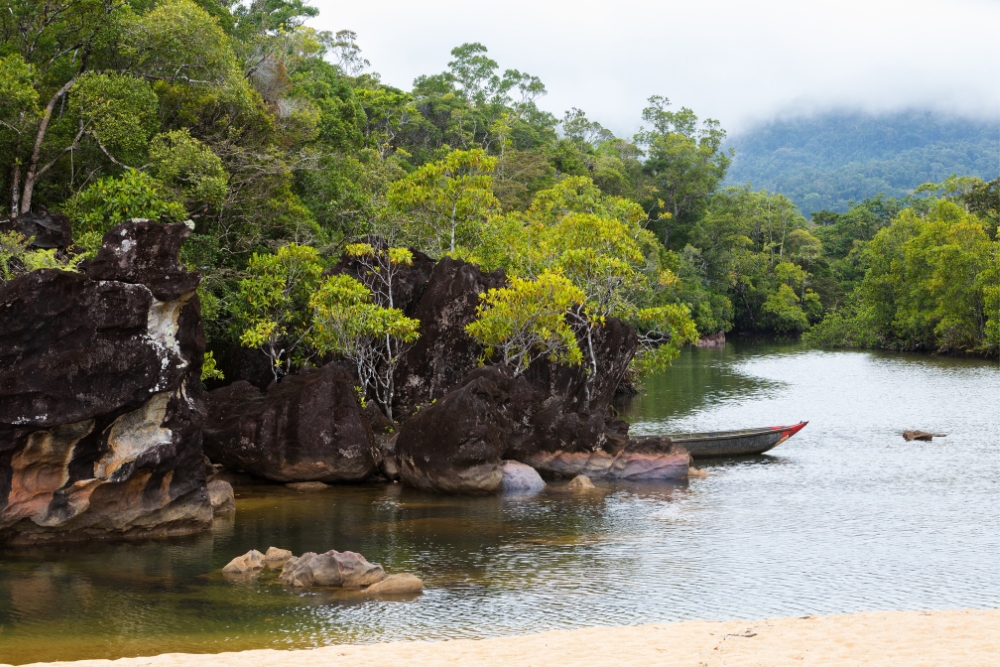
Covering an area of over 2,300 square kilometers, Masoala National Park is located in the northeastern part of the island. It is home to various flora and fauna, including several endangered species. As you step into this lush rainforest, you will be greeted by the symphony of chirping birds and the rustling of leaves, creating a magical atmosphere that will transport you to another world.
One of the highlights of exploring Masoala National Park is the opportunity to encounter the iconic lemurs. These charismatic primates are endemic to Madagascar and can be found in various species within the park. From the playful ring-tailed lemurs to the elusive aye-ayes, you can observe these fascinating creatures up close in their natural habitat.
As you venture deeper into the rainforest, you will see breathtaking waterfalls cascading down moss-covered rocks. The crystal-clear pools beneath the falls invite you to take a refreshing dip, providing a welcome respite from the tropical heat. The lush vegetation surrounding the waterfalls creates a picturesque backdrop, making it a perfect spot for nature enthusiasts and photographers.
For those seeking a more adrenaline-fueled adventure, Masoala National Park offers thrilling hiking trails that will take you through dense forests and rugged terrains. As you navigate the winding paths, you will encounter many plant species, some of which are found nowhere else on Earth. The knowledgeable guides will share their expertise, pointing out medicinal plants and explaining the intricate relationships between the flora and fauna.
One of the most unique experiences in Masoala National Park is the opportunity to explore the marine ecosystem. The park encompasses much of the coastline, including pristine coral reefs and mangrove forests. Snorkeling or diving in these waters will reveal a vibrant world teeming with colorful fish, sea turtles, and even the occasional whale or dolphin sighting.
To truly immerse yourself in the wonders of Masoala National Park, consider spending a night or two in one of the eco-lodges within the park. These rustic accommodations offer a chance to disconnect from the outside world and fully embrace the tranquility of the rainforest. Falling asleep to the sounds of nature and waking up to the melodious songs of birds will be an experience you will cherish forever.
As you explore Masoala National Park, it is important to remember that conservation efforts are crucial to preserving this unique ecosystem. The park authorities have implemented strict regulations to protect the flora and fauna, and visitors are encouraged to follow responsible tourism practices. By respecting the environment and supporting local communities, you can contribute to the long-term sustainability of this natural treasure.
4 Immersing in Nature at Andasibe-Mantadia National Park
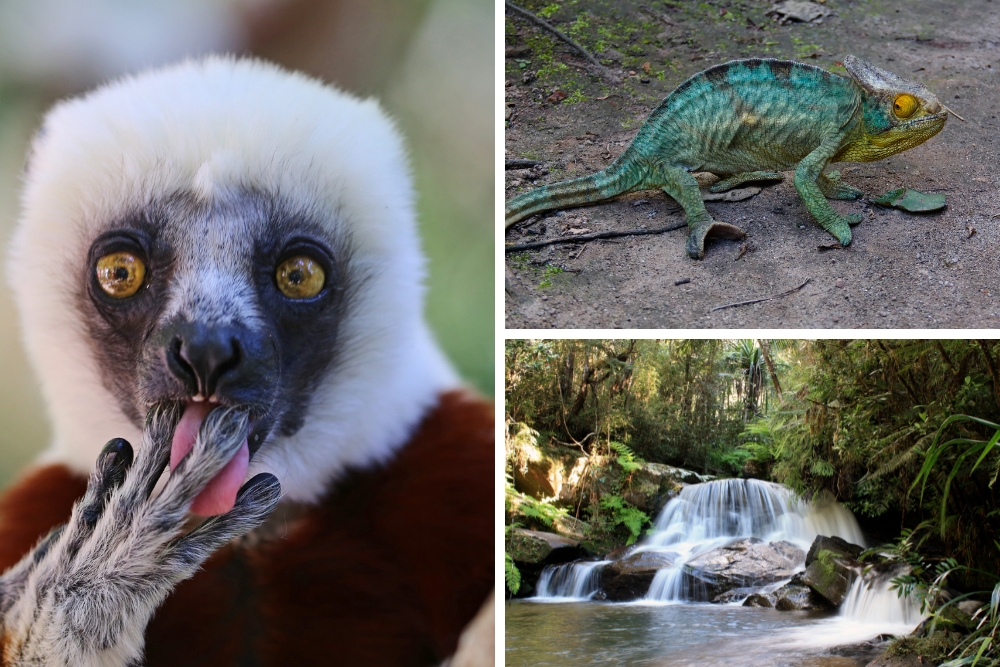
Located in the eastern part of the island, Andasibe-Mantadia National Park is a protected area that encompasses two distinct parks: the smaller but more accessible Andasibe National Park and the larger, more remote Mantadia National Park. Together, they cover over 150 square kilometers, making it a perfect destination for nature enthusiasts.
As you step into the park, you’ll be greeted by a symphony of sounds. The air is filled with the calls of various species of lemurs, the most famous of which is the Indri. Known for its hauntingly beautiful song, the Indri is the largest lemur species and can only be found in Madagascar. Watching these charismatic creatures leap from tree to tree is an experience you won’t soon forget.
But lemurs are not the only inhabitants of this lush forest. Andasibe-Mantadia National Park is also home to various bird species, reptiles, and amphibians. If you’re lucky, you might spot the colorful Parson’s chameleon or the tiny Mantella frog, both endemic to Madagascar. The park is also a haven for birdwatchers, with over 100 species of birds, including the rare Madagascar serpent eagle and the vibrant blue coua.
As you explore the park, you’ll be surrounded by a breathtaking display of flora. Towering trees, some over 800 years old, create a dense canopy that filters the sunlight, casting a magical glow on the forest floor. The park is also known for its orchids, with over 100 species within its boundaries. Walking along the well-maintained trails, you’ll be treated to a kaleidoscope of colors and scents, a true feast for the senses.
For those seeking a more adventurous experience, the Mantadia National Park offers a rugged and challenging terrain. Its steep slopes, dense vegetation, and hidden waterfalls make it a paradise for hikers and nature enthusiasts. The park is home to several species of lemurs, including the diademed sifaka and the black-and-white ruffed lemur. Exploring this remote part of the park will give you a sense of adventure and a deeper appreciation for Madagascar’s natural wonders.
3 Discovering the Pristine Beauty of Nosy Be Island
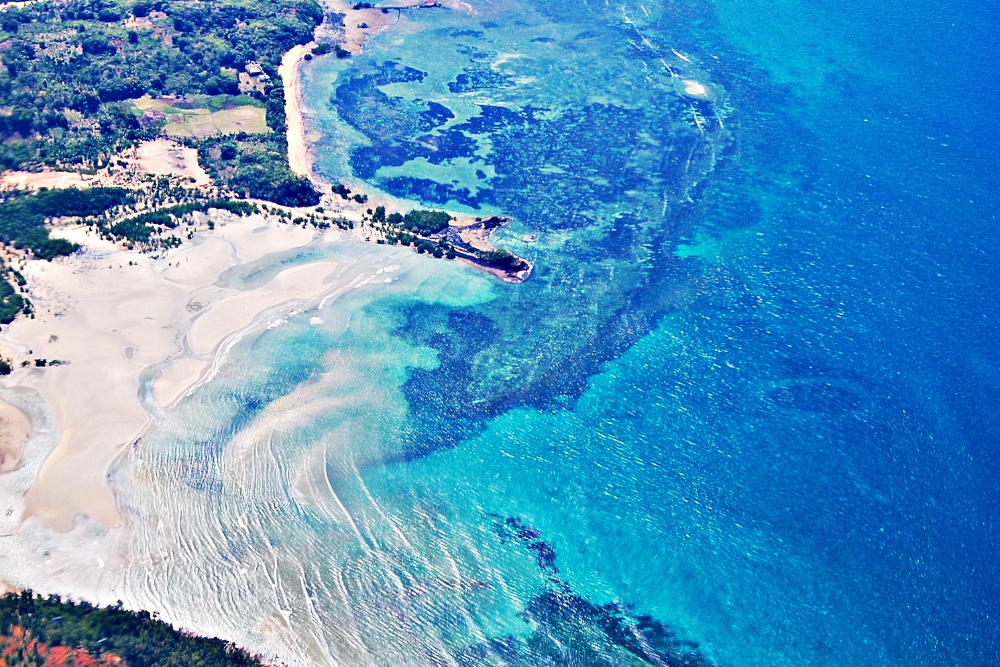
As you step on Nosy Be Island, you’ll immediately be greeted by its pristine beauty. The island is surrounded by crystal-clear turquoise waters, which are perfect for snorkeling and diving. The coral reefs teem with colorful fish and other marine life, creating a mesmerizing underwater world. Whether you’re an experienced diver or a beginner, plenty of dive centers on the island offer courses and guided tours.
If you prefer to stay above water, you can take a boat trip to Nosy Komba Island. This small island is home to a population of lemurs, the iconic primates of Madagascar. As you explore the lush forests, you’ll have the opportunity to see these adorable creatures up close and personal. Just be sure to follow the guidelines the local guides provide to ensure your and the lemurs’ safety.
You can trek through the Lokobe Nature Reserve on Nosy Be Island. This protected area is a haven for endemic species, including the black lemur and the leaf-tailed gecko. As you hike through the dense rainforest, you’ll be surrounded by the sounds of exotic birds and the scent of tropical flowers. It’s an immersive experience that will leave you in awe of Madagascar’s biodiversity.
After exploring, you can unwind on one of Nosy Be’s stunning beaches. Ambatoloaka Beach is a popular spot for sunbathing and swimming, with its soft white sand and calm waters. If you’re feeling adventurous, you can try your hand at kitesurfing or windsurfing, as the island’s breezy conditions make it an ideal destination for these water sports.
As the sun sets, you can head to Hell-Ville, the main town on Nosy Be Island. Here, you’ll find a vibrant nightlife scene, with bars and restaurants offering delicious local cuisine and live music. Don’t miss the opportunity to try some of the island’s specialties, such as zebu steak and vanilla-infused rum.
If you want to learn more about the local culture, you can visit the Nosy Be Museum. This small museum showcases the island’s history and traditions, including its ties to the Sakalava people. You can also browse through the local markets, where you’ll find an array of handicrafts and souvenirs to take home.
No trip to Nosy Be Island would be complete without a visit to the Mont Passot viewpoint. Located at the highest point on the island, this viewpoint offers panoramic views of the surrounding landscape. On a clear day, you can see as far as the neighboring islands and the mainland of Madagascar. It’s a breathtaking sight that will leave you with lasting memories.
2 Unveiling the Mysteries of Tsingy de Bemaraha National Park
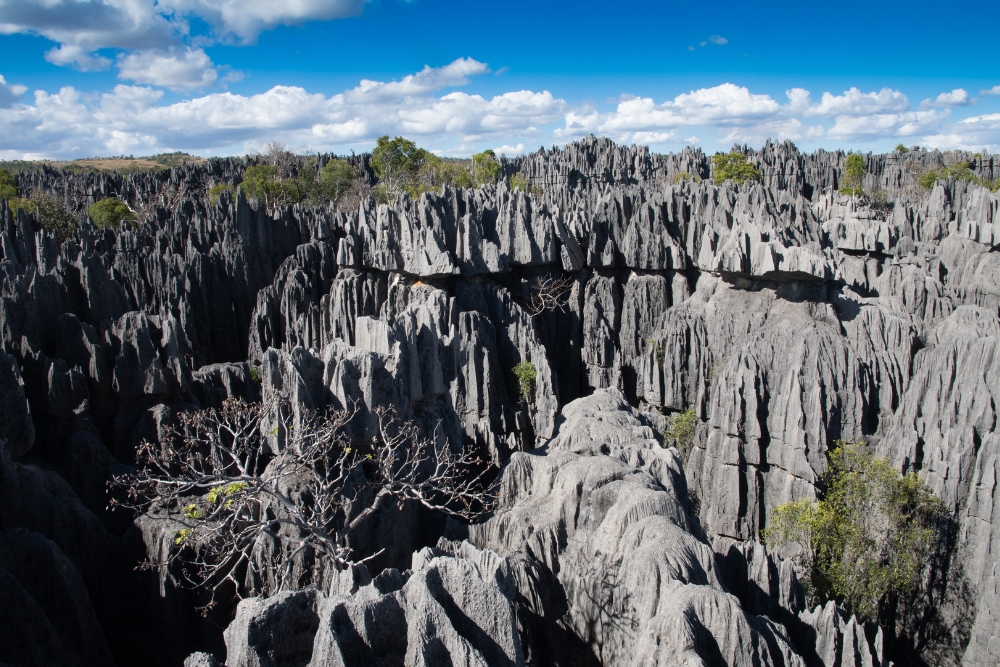
Located in the western part of the country, Tsingy de Bemaraha National Park is a UNESCO World Heritage Site covering over 1,500 square kilometers. The park is known for its otherworldly landscape, characterized by sharp limestone formations that resemble a forest of stone needles. These formations, known as tsingy, were created over millions of years through erosion.
Exploring Tsingy de Bemaraha National Park is like stepping into another world. As you venture into the park, you’ll find yourself surrounded by towering limestone pinnacles, deep canyons, and hidden caves. The park is home to many plant and animal species, many of which are found nowhere else on Earth. From lemurs to chameleons, the park is a haven for wildlife enthusiasts.
One of the highlights of visiting Tsingy de Bemaraha National Park is the opportunity to hike through the tsingy. The park offers a trail network that allows visitors to explore this unique landscape up close. As you go through the narrow canyons and climb up the limestone formations, you’ll be rewarded with breathtaking views of the surrounding countryside.
For those seeking an adrenaline rush, the park also offers the chance to go rock climbing and rappelling. Scaling the sheer limestone cliffs is not for the faint of heart, but the exhilaration of reaching the top is well worth the effort. Just bring your sense of adventure and a good pair of hiking boots!
In addition to its natural wonders, Tsingy de Bemaraha National Park is also home to several cultural sites. The park is inhabited by the local Sakalava people, who deeply connect to the land. Visitors can learn about their traditions and way of life by visiting nearby villages and interacting with the locals.
To make the most of your visit to Tsingy de Bemaraha National Park, it’s best to hire a local guide. They can provide valuable insights into the park’s history, geology, and wildlife. They can also help you navigate the trails and ensure your safety during your visit.
As with any natural attraction, respecting the environment and following the park’s rules and regulations is important. Tsingy de Bemaraha National Park is a fragile ecosystem, and it’s our responsibility to preserve it for future generations. So, remember to stay on designated trails, avoid littering, and refrain from disturbing wildlife.
1 Exploring the Marvels of Avenue of the Baobabs in Madagascar
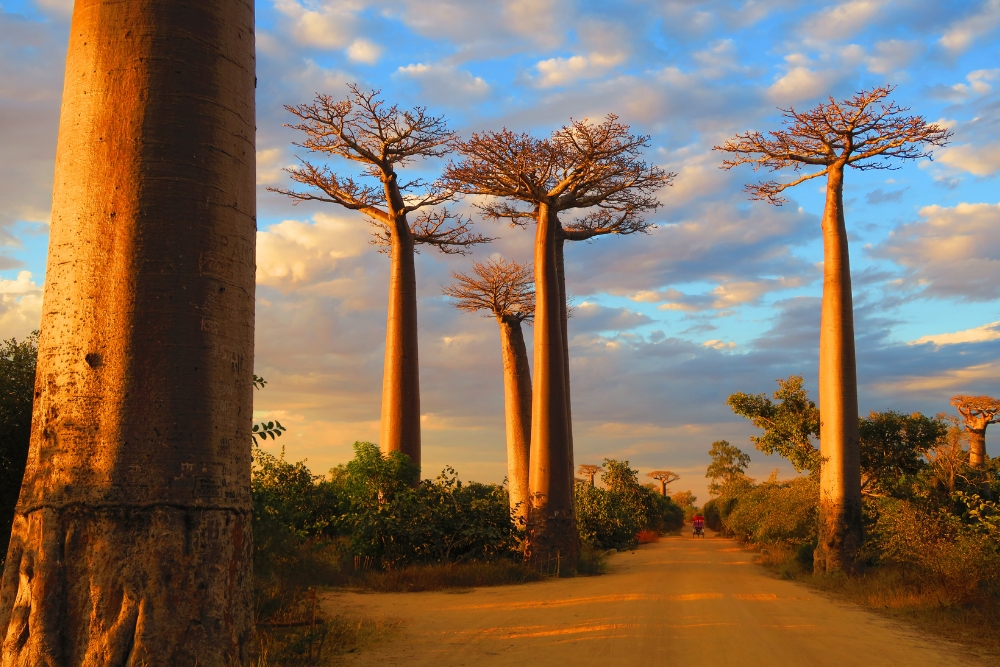
Located in the Menabe region of western Madagascar, the Avenue of the Baobabs is a stretch of dirt road lined with majestic baobab trees. Some over 800 years old, these ancient giants tower above the landscape, creating a surreal and magical atmosphere. As you drive along the avenue, you can’t help but feel a sense of wonder and awe at the sheer size and beauty of these trees.
The baobabs, also known as “upside-down trees” for their peculiar shape, symbolize Madagascar. They have been featured in countless photographs and documentaries, captivating the imagination of people worldwide. Standing up to 30 meters tall, with massive trunks and branches that resemble roots, these trees are truly a sight to behold.
The best time to visit the Avenue of the Baobabs is sunrise or sunset when the golden light bathes the landscape, creating a magical ambiance. As the sun rises or sets, the baobabs cast long shadows on the road, adding to the mystical atmosphere. It’s a photographer’s dream come true, and you’ll find yourself snapping away, trying to capture the beauty of this place.
Aside from its visual appeal, the Avenue of the Baobabs also holds cultural significance for the local communities. The baobab trees are considered sacred by the Malagasy people, and they believe that these trees possess spiritual powers. Many locals come to the avenue to perform rituals and seek blessings from the trees, adding a spiritual dimension to the experience.
Exploring the Avenue of the Baobabs is not just about admiring the trees from a distance. Several walking trails allow you to get up close and personal with these giants. Walking among the baobabs, you’ll be amazed by their sheer size and the intricate patterns on their trunks. It’s a humbling experience that reminds us of the power and beauty of nature.
While the Avenue of the Baobabs is undoubtedly the main attraction, there are other things to see and do in the area. Nearby, you’ll find the Kirindy Forest, a biodiversity hotspot home to many wildlife, including lemurs, fossas, and various bird species. Exploring the forest is like stepping into a different world, where you can observe these unique creatures in their natural habitat.
Is it safe to go to Madagascar?
Madagascar is generally considered a safe destination for travelers. However, as with any other travel destination, it is important to take necessary precautions to ensure personal safety. While the country has a lower crime rate than other African nations, petty theft and pickpocketing can occur, particularly in crowded areas and tourist hotspots.
It is advisable to be vigilant, especially in urban areas, and take common-sense measures such as keeping valuables out of sight and avoiding walking alone at night. Additionally, it is recommended to stay informed about local conditions and follow any advisories issued by the government or embassies. Overall, exercising caution and being aware of one’s surroundings can provide a safe and enjoyable experience while visiting Madagascar.
Is Madagascar a cheap holiday destination?
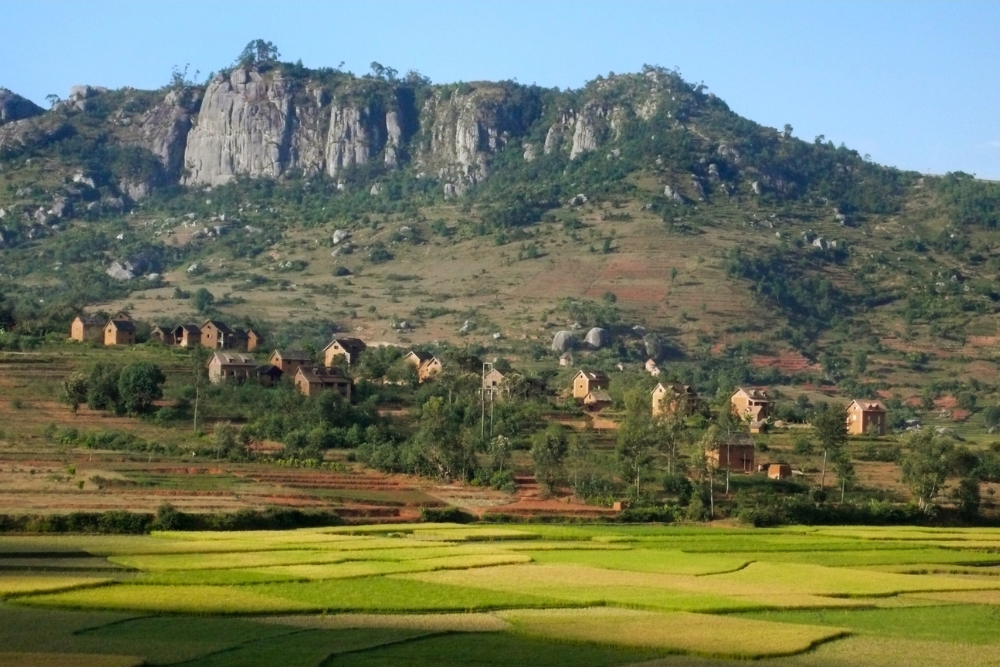
With its unique and diverse landscapes, rich wildlife, and vibrant culture, Madagascar offers an incredible holiday experience. In terms of affordability, Madagascar can be considered a relatively budget-friendly destination.
While the cost of flights to the island may vary depending on the departure location, once there, accommodation, food, and transportation options tend to be quite affordable. A range of accommodations is available, from budget-friendly guesthouses and hostels to mid-range hotels, allowing travelers to find options that suit their budget.
Additionally, local street food and small restaurants offer inexpensive yet delicious meals, providing a taste of the local cuisine without breaking the bank. While certain activities, such as guided wildlife tours, may have higher costs, there are also many free or low-cost attractions, such as national parks and stunning beaches, where travelers can immerse themselves in the island’s natural beauty. Overall, Madagascar can be seen as an affordable holiday destination that offers incredible value for money.
When is the best time to visit Madagascar?
The best time to visit Madagascar is during the dry season, typically from April to November. During this time, the weather is generally warm and pleasant, with less rainfall and lower humidity. This makes it ideal for exploring the country’s diverse landscapes, including its stunning national parks, pristine beaches, and unique wildlife.
The dry season is also the best time for activities such as hiking, wildlife spotting, and snorkeling or diving in the crystal-clear waters. However, it’s important to note that Madagascar is a large island with varying climates, so depending on the region you plan to visit, it’s advisable to check the specific weather patterns for that area.
What is the biggest problem in Madagascar?
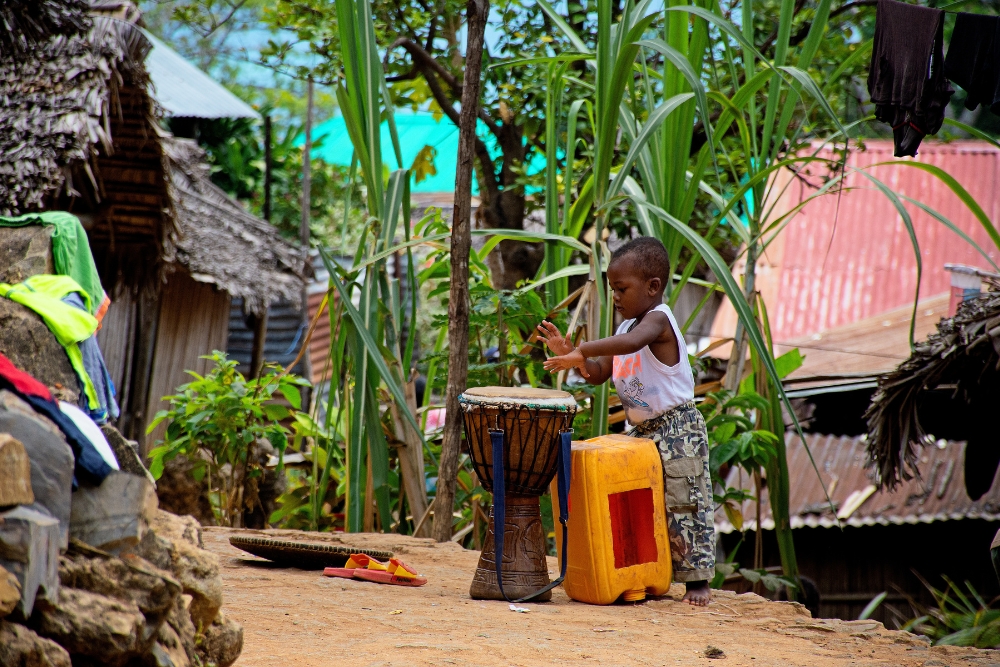
One of the biggest problems in Madagascar is extreme poverty. The majority of the country’s population lives below the poverty line, struggling to meet their basic needs. High unemployment rates, limited access to education, and inadequate healthcare services further exacerbate the poverty crisis.
Additionally, the country faces challenges in addressing environmental issues, such as deforestation and loss of biodiversity, which not only impact the well-being of the local population but also hinder economic development. Tackling poverty in Madagascar requires comprehensive strategies that focus on improving education, creating employment opportunities, and implementing sustainable environmental practices to alleviate the hardships faced by its people.
Conclusion
In conclusion, Madagascar offers diverse tourist attractions showcasing its unique natural beauty and cultural heritage. The top 10 tourist attractions in Madagascar include the Avenue of the Baobabs, Tsingy de Bemaraha National Park, Isalo National Park, Ranomafana National Park, Andasibe-Mantadia National Park, Nosy Be, Ifaty and Mangily, Antananarivo, Morondava, and the Royal Hill of Ambohimanga. These attractions allow visitors to explore stunning landscapes, encounter rare wildlife, immerse in local culture, and relax on beautiful beaches. Madagascar truly is a destination that captivates and delights travelers worldwide.

